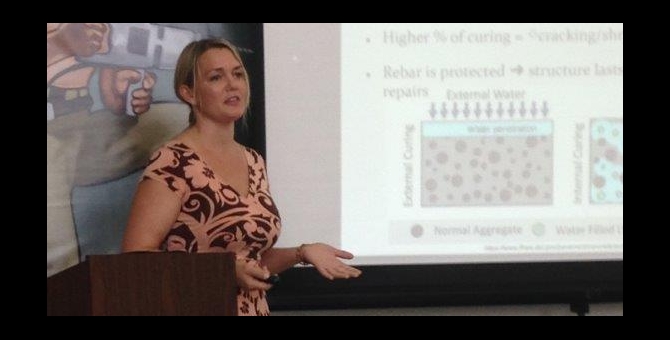Improving Concrete Lifespan in Marine Environments using Internal-Curing Materials
Project Description
Reinforced concrete structures in marine environments have not been reaching 75 year lifespans - as outlined in their Navy specifications. Cracking due to shrinkage, freeze/thaw cycles, and alkali aggregate reactions allow harmful agents into the concrete matrix - corroding embedded rebar and if left unchecked leads to failure. We therefore investigated the effectiveness of internal-curing (IC) materials at reducing cracking which premeditates this failure. Whereby traditional curing methods involve only a superficial water application, IC provides additional water in pre-wetted materials added to the concrete mixture, ensuring a thorough and uniform ‘curing.’ We made two controls: 1) the standard industrial concrete mixture and 2) the Navy’s fly ash enhanced concrete. These served as benchmarks for our three experimental mixtures; each containing one IC material: 1) a light-weight aggregate mixture, 2) a superabsorbent polymer mixture, and 3) a diaper-fiber mixture. Each mixture was subject to a battery of tests at one-week intervals. At the time of this abstract’s writing, the superabsorbent polymer concrete holds most promise – displaying the least amount of shrinkage at day 7 with 151 microstrain. Data relating to ‘restrained shrinkage’ as well as compressive strength require additional collection time; at least 21 days; in order to provide statistically relevant metrics and our corresponding conclusions as to the best material.





















